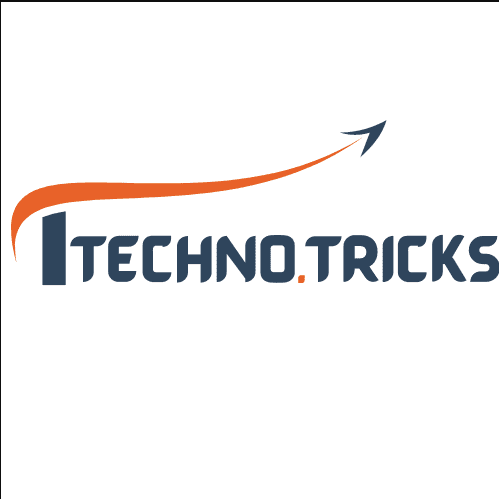The Rise of Virtual Medical Scribing in Today’s Healthcare System

Imagine a world where healthcare professionals can entirely focus on providing care free from the hassle of duties. This is the potential offered by scribing. Over the years, the presence of medical scribes has grown in significance within hospital and clinic settings. This innovative approach enables healthcare providers to handle records while upholding high standards of care.
In this article, we will explore the intricacies of scribing, its advantages, the technology supporting it in real-life instances, and prospects for the future. If you are a healthcare practitioner seeking to enhance your practice, continue reading to discover how remote medical scribing could transform your workflow.
Definition and Significance of Remote Medical Scribing
A medical scribe remote is a professional who aids healthcare providers by documenting patient interactions in real-time from a distant location. Scribes record details during appointments to ensure that all medical records are precise and current. This role plays a role in healthcare by allowing doctors and nurses to focus on their core responsibilities—caring for patients. Remote medical scribes capture information such as backgrounds, symptoms, diagnoses, and treatment strategies.
Their efforts guarantee that medical records are thorough and accurate, minimizing mistakes and enhancing results. By managing the paperwork, scribes create time for healthcare professionals to attend to patients and deliver top-notch care.
The Advantages of Remote Medical Scribing:
Efficiency, Precision, and Cost Effectiveness
One benefit of medical scribing is its efficiency. By delegating documentation tasks, healthcare providers can concentrate on care, resulting in shorter wait times and increased patient satisfaction.
- The efficiency achieved through scribing leads to a workflow that enables practices to handle a more significant number of patients without sacrificing quality.
- Another advantage of medical scribing is accuracy. Scribes receive training to record precise information, ensuring that patient records are accurate and error-free. This precision is vital for making informed decisions and devising effective treatment plans. With documentation, healthcare providers can depend on patient histories for better diagnoses and enhanced patient care.
- Cost-effectiveness is a factor for any healthcare facility. Remote medical scribing provides a cost solution by reducing the necessity for in-house staff. By using scribes, medical practices can cut costs on hiring, training, and overhead expenses linked to full-time staff. These savings can then be redirected to improve aspects of the practice, ultimately enhancing care and operational efficiency.
The Technology Involved in Remote Medical Scribing
Remote scribing relies on technology to enable smooth communication and secure data exchange between healthcare professionals and scribes. Various platforms and software solutions support real-time collaboration, ensuring recording and easy access to information.
These platforms often feature tools like audio and video streaming, allowing scribes to transcribe encounters as they happen. Moreover, messaging systems help healthcare providers and scribes communicate effectively during documentation. These technologies ensure that remote scribing is efficient, precise, and highly beneficial.
Security stands out as a priority in medical scribing due to the sensitive nature of patient data. Robust security measures such as encryption, access controls, and compliance with regulations like HIPAA (Health Insurance Portability and Accountability Act) are in place to safeguard data privacy. By emphasizing security standards, remote medical scribing platforms guarantee the protection of information—building trust among healthcare providers and patients alike.
Incorporating Remote Medical Scribing into Healthcare Operations
The influence of scribing on healthcare operations is significant. Various instances and practical scenarios illustrate how this innovative approach has revolutionized workflows and enhanced patient care. For example, a bustling family clinic in New York experienced a 30% rise in visits following the adoption of medical scribing. Doctors could allocate time to patient interactions by reducing documentation burden, leading to increased satisfaction and improved outcomes.
Another illustration stems from a hospital network in California that introduced medical scribes in emergency departments. The presence of these scribes resulted in a 25% decrease in patient wait times and a notable reduction in documentation errors. This enhancement not only improved patient care but also enhanced the departments’ overall efficiency.
These success anecdotes underscore the advantages of incorporating medical scribing across diverse healthcare environments. By delegating tasks to scribes, healthcare providers can streamline operations, enhance patient experiences, and ultimately provide superior care.
Read also: Here Are 7 Top Health Benefits Of Berries For Men
Incorporation, Education, and Optimal Approaches for Healthcare Practitioners
Integrating remote medical scribing into healthcare settings necessitates thorough planning and assessment. Healthcare practitioners must choose a provider of scribing services that meets their specific demands and criteria.
Evaluating a provider’s track record, expertise, and the quality of their scribes is crucial. Practical training plays a role in integration. Healthcare providers must ensure on-site staff and remote scribes receive training on documentation procedures, platforms, and security measures. This training facilitates a transition and encourages productive collaboration between healthcare professionals and scribes.
Implementing practices for medical scribing involves maintaining clear communication, providing regular feedback, and striving for continuous improvement. Healthcare providers should establish channels of communication with their scribes to promptly address any queries or issues. Regular feedback sessions enhance documentation processes’ accuracy and efficiency, ensuring patient records remain thorough and current.
This progress can significantly enhance the efficiency and precision of documentation. Furthermore, the scope of scribing is anticipated to extend beyond traditional healthcare environments. With the rise of telemedicine and remote patient monitoring, there is a growing need for scribes to document these interactions effectively. This expansion creates avenues for medical scribing to contribute to the ever-changing healthcare landscape.
Conclusion
In summary, remote medical scribing offers significant value to healthcare professionals. By delegating documentation responsibilities to scribes, healthcare providers can focus more on patient care. Medical scribing’s effectiveness, accuracy, and cost-efficiency, including crucial aspects like healthcare data entry, position it as a valuable asset for any healthcare facility.
If you’re interested in reaping the benefits of scribing, consider integrating this innovative solution into your practice. Whether you operate a small clinic or an extensive hospital system, incorporating medical scribing can streamline processes, enhance patient outcomes, and keep you at the forefront of the dynamic healthcare field. Explore the opportunities available and take a step toward transforming your practice today.




